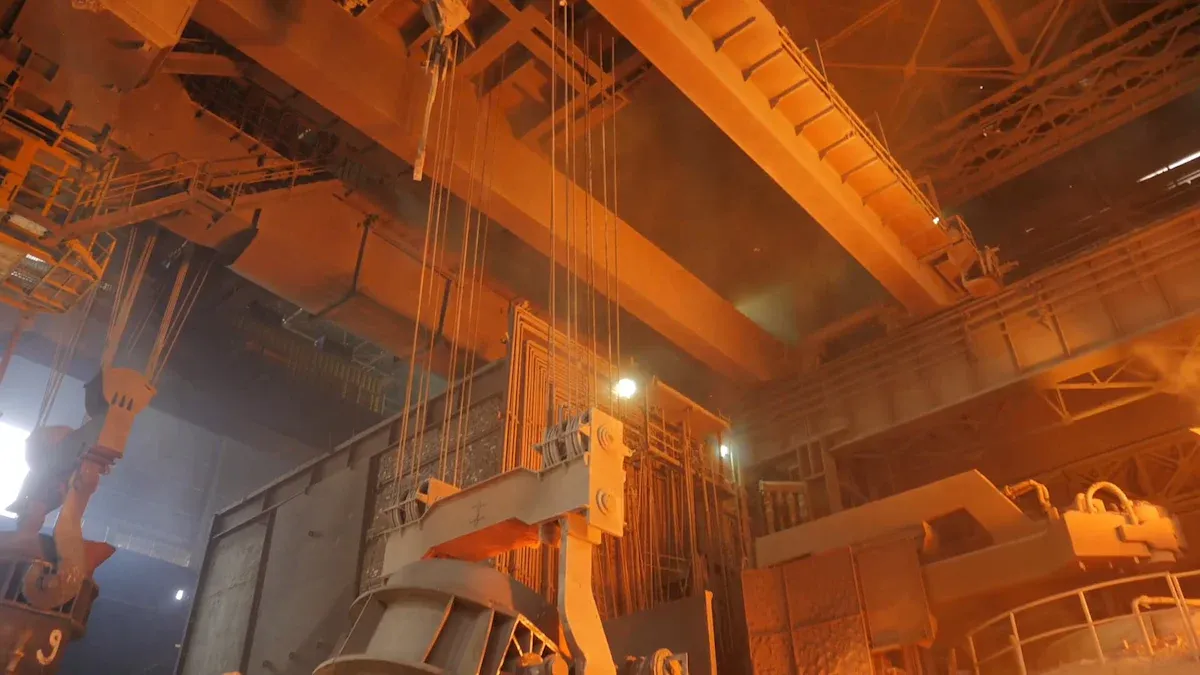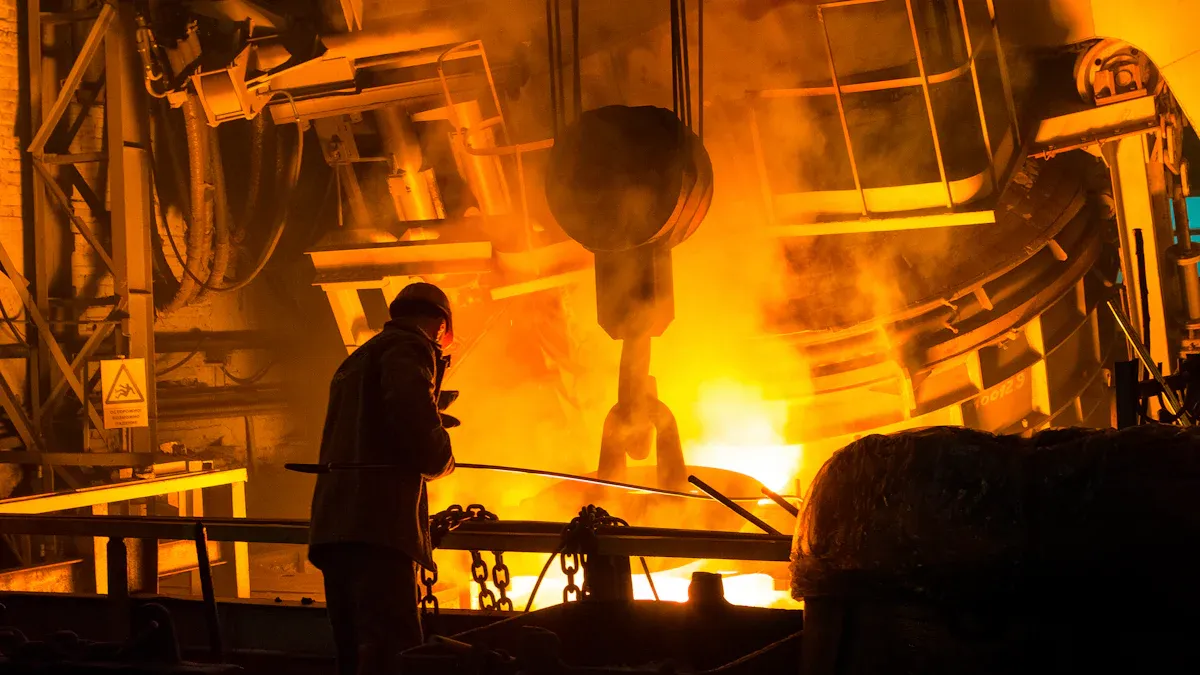Die Casting Slides Explained What They Are and Why They Matter

A die casting slide is a part in a die casting machine. This part moves sideways into the die. It helps make shapes that normal dies cannot create. Engineers use a die casting slide to make undercuts and tricky shapes in metal parts. Makers like this tool because it makes detailed products. These products meet tough industry rules.
The die casting slide helps make better designs in modern factories.
Key Takeaways
Die casting slides move inside a die to make hard shapes. They can make undercuts and holes that fixed dies cannot do.
Multi-slide machines use many slides at the same time. This makes production faster and parts more accurate. Small and detailed parts are easier to make.
Many industries use die casting slides. These include automotive, aerospace, electronics, and telecommunications. They need strong, light, and exact metal parts.
Die casting slides help factories make parts quickly and accurately. This saves time and cuts down on extra work.
Die casting slides cost more to build and keep working. But they make better parts and save money when making lots of parts.
What Is a Die Casting Slide

Definition
A die casting slide is a part that can move inside a die. It moves sideways or at an angle when making parts. The slide fits into the die and helps shape metal with holes, undercuts, or inside details. Many experts say the four-slide die casting process is special for making hard shapes. In this process, four slides move up and down on their own to make shapes inside the die. The die has two main pieces. Hot metal goes into the die, fills every gap, and cools to make the finished part.
The die casting slide lets engineers make shapes that a normal die cannot do.
The slide and die work together to make parts that are very exact.
The die casting process uses machines to save money and keep quality high.
Factories can use metals like aluminium, zinc, or magnesium in the die.
The die casting slide is important because it lets makers design parts with more detail and tricky shapes than other ways.
Core Function
The main job of a die casting slide is to make shapes that a fixed die cannot do. The slide moves into the die before hot metal is poured in. When the metal cools, the slide moves out and the part comes free. This lets people make overhangs, holes, and other hard shapes.
Experts say slides, also called moveable cores, are needed for making tricky shapes in die casting. They say a die can last for more than 500,000 uses. They also say the process can make parts with about 0.1 mm accuracy and a surface as smooth as one micrometre. The die casting slide makes the die more complex, but it also helps make more parts and better parts.
Feature | Typical Value/Description |
|---|---|
Die Life | Over 500,000 shots |
Dimensional Accuracy | Around 0.1 mm |
Surface Roughness | As low as 1 micrometre |
Complexity Enabled | Overhangs, holes, internal forms |
The die casting process needs the slide to make new designs. Makers can meet strict rules and make parts faster. The die casting slide makes the die harder to build, but it also makes the process stronger.
How Die Casting Slides Work

Die Casting Slide Mechanism
A die casting slide can move sideways or at an angle. This lets the die make undercuts and tricky shapes. A fixed die cannot do this. In the 4 slide die casting process, each slide comes from a different side. The slides close tightly and make a space with lots of detail. Hot metal goes into the die and fills every gap. When the metal cools, the slides move away. The finished part comes out easily.
Hydraulic systems often move the slides. These systems can be very exact, sometimes as close as 0.01mm. This helps factories make parts that fit very well. The 4 slide die casting process means less extra work is needed. Engineers can design parts with holes and overhangs. They can add other tricky details too. The process is faster and the parts are high quality.
The 4 slide die casting method helps makers create parts with more detail and fewer mistakes.
Multi-Slide Machines
Multi-slide machines use more than one slide at the same time. In the 4 slide die casting process, four slides work together. They shape the metal in one go. Multi-slide machines often make small and exact parts. These parts are used in electronics and car connectors.
Multi-slide machines are faster than single-slide machines. They can work at the same time. If one slide needs fixing, the others can keep going. Automation and batch work help make more parts and keep them accurate. But real speed depends on loading the die and checking quality. The 4 slide die casting process is flexible. It helps factories fill urgent orders.
Using multi-slide systems with hydraulic power makes parts even more exact. This is good for parts with undercuts. Factories can control the process to get fine details. Studies show vacuum die casting with advanced slides makes parts stronger. It also lowers holes inside the metal.
Uses and Applications
Industries
Die casting slides are important in many industries. Car makers use them to make parts that are light and strong. Aerospace companies need them for parts that must be very safe. Electronics companies use them to make connectors and cases with exact shapes. Builders use die casting slides for things like fittings and fixtures. Telecommunication companies need small, detailed parts for their devices. Energy and consumer goods companies also use this technology.
Many industries pick die casting slides instead of metal stamping when they need tricky shapes and high accuracy.
The world market for die casting slides is getting bigger. North America is first, with most of the car casting work. Europe is next, with new ideas and strict green rules. Asia-Pacific, led by China, is growing fast because of government help and the need for light parts. The table below shows important market facts:
Region | Market Share / Revenue Share | CAGR Forecast | Key Drivers and Notes |
|---|---|---|---|
North America | 84.29% (U.S. dominance) | 5.4% | Major manufacturers, advanced supply chain, automotive casting demand |
Europe | 27.66% (Germany leading) | 5.2% | Automotive OEMs, innovation, EV shift, environmental regulations |
Asia-Pacific | 54.58% (China leading) | 6.6% | EV subsidies, lightweight components, infrastructure investments |
Product Types
Die casting slides help make many different products. Car parts include engine covers, gearboxes, and brackets. Electronics use them for connectors, switches, and heat sinks. Builders use them for door handles, window frames, and locks. Telecommunication devices need tiny, detailed parts that only die casting slides can make. The energy sector uses them for meter cases and connectors.
Metal stamping cannot make parts with as much detail as die casting slides. Factories use die casting slides to make zinc alloy parts, magnesium pieces, and aluminium cases. These parts must be strong and very exact. Metal stamping is good for flat or simple shapes. Die casting slides can make undercuts and hard shapes. Many companies buy die casting slides to make better products and meet what the market wants. Metal stamping is still used for some jobs, but die casting slides give more choices for new designs.
Engineers often look at die casting slides and metal stamping to pick the best way for each product.
The market for die casting slides was USD 79.53 billion in 2023. Experts think it will grow to USD 133.9 billion by 2032, with a growth rate of 5.96%. Car, aerospace, and telecommunication companies help this market grow. Metal stamping is still used in many areas, but die casting slides are better for tricky and exact parts.
Advantages and Limitations
Benefits
Die casting slides give many good things in today’s factories. They let engineers make parts with tricky shapes and small details. This means products can have undercuts, holes, and inside shapes that fixed dies cannot do. Factories use slides to get very exact parts, sometimes as close as 0.1 mm.
High-pressure die casting (HPDC) helps factories work faster. It lets them make lots of parts in a short time.
HPDC keeps sizes very close to what is needed. This means less extra cutting and saves time.
Dies last a long time in HPDC, so each part costs less, even if the first cost is high.
Slides let makers join many parts into one. This cuts down on how many steps are needed and makes work quicker.
Die casting slides help companies follow strict rules and keep making parts fast and right.
A study on car parts found that using slides made parts 21% lighter. The cost for each pound saved was only a little more. This means slides are worth the extra money, especially when making lots of parts.
Drawbacks
Even with these good points, die casting slides have some problems. The first cost for dies and machines is high. Looking after them can also cost a lot, especially for tricky tools. Making only a few parts may not be worth the price.
A new study on big 3D-printed sliders with special cooling showed some problems. Factories needed to make about 110,000 parts to make 3D-printed tools worth it. If they spent less at the start, this number could drop to 60,000 parts. But making 3D-printed tools cost about 150% more than normal tools. The study also found problems like parts changing shape and metal leaking because of heat and force. Factories must think about bending and leftover stress when making big parts.
Tricky designs can cost more and break more often, especially with advanced slides.
Die casting slides help factories make tricky and exact parts fast. People who know a lot and those who are new both use them. The table below shows that 3D-printed slides need fixing much less, about 65% fewer repairs. They also make parts in less than half the time. But, they cost more at the start. If you want to learn about new ways to make things, knowing about die casting slides can help you make better and faster products.
Metric | Conventional Serial Slider | 3D-Printed Slider |
|---|---|---|
Average Number of Cast Pieces | ~39,603 | 36,977 |
Total Repairs (Core + Shape) | 17 | 6 |
Production Time (Nh) | 263 | 95 |
Production Cost (€) | 15,040 | 37,921 |
FAQ
What is the main purpose of a die casting slide?
A die casting slide lets people make shapes a fixed die cannot. It moves sideways or at an angle. This helps make undercuts, holes, and tricky shapes in metal parts.
Which metals work best with die casting slides?
Engineers use aluminium, zinc, and magnesium with die casting slides. These metals fill small spaces well and cool down fast. This makes them good for making tricky parts.
How does a multi-slide machine improve production?
Multi-slide machines use more than one slide at the same time. This makes work faster and more exact. Factories can make small, detailed parts quickly and with fewer mistakes.
Are die casting slides expensive to maintain?
Die casting slides can cost more to look after than simple dies. They have moving parts and tricky shapes that need checking often. But they last longer and need less extra work after.
Can die casting slides make parts for the aerospace industry?
Yes, die casting slides help make strong and light parts for planes. These parts must be safe and high quality. Engineers use slides to make detailed and trusted parts.
See Also
An Easy Explanation Of The Semi-solid Casting Process
A Supplier’s Handbook On CBAM And Sustainable Casting
Understanding The Aluminium Extrusion And Die Casting Methods
Exploring The Advantages Of CAE In Die Casting Design
Key Procedures For Testing Die Casting Moulds Pre-Production
About Hunan Puka
Established in 2016 and based in Hunan, China, with a liaison point in Berlin, we are a Tier 2 supplier for the automobile industry. We specialize in the production of customized aluminum die-casting parts designed for machines with a closing force ranging from 280 to 1250 tons, with subsequent manufacturing process CNC machining and surface treatment. Our commitment to quality is reflected in our accredited quality management system, certified by ISO9001:2015 and IATF16949:2016 standards.


